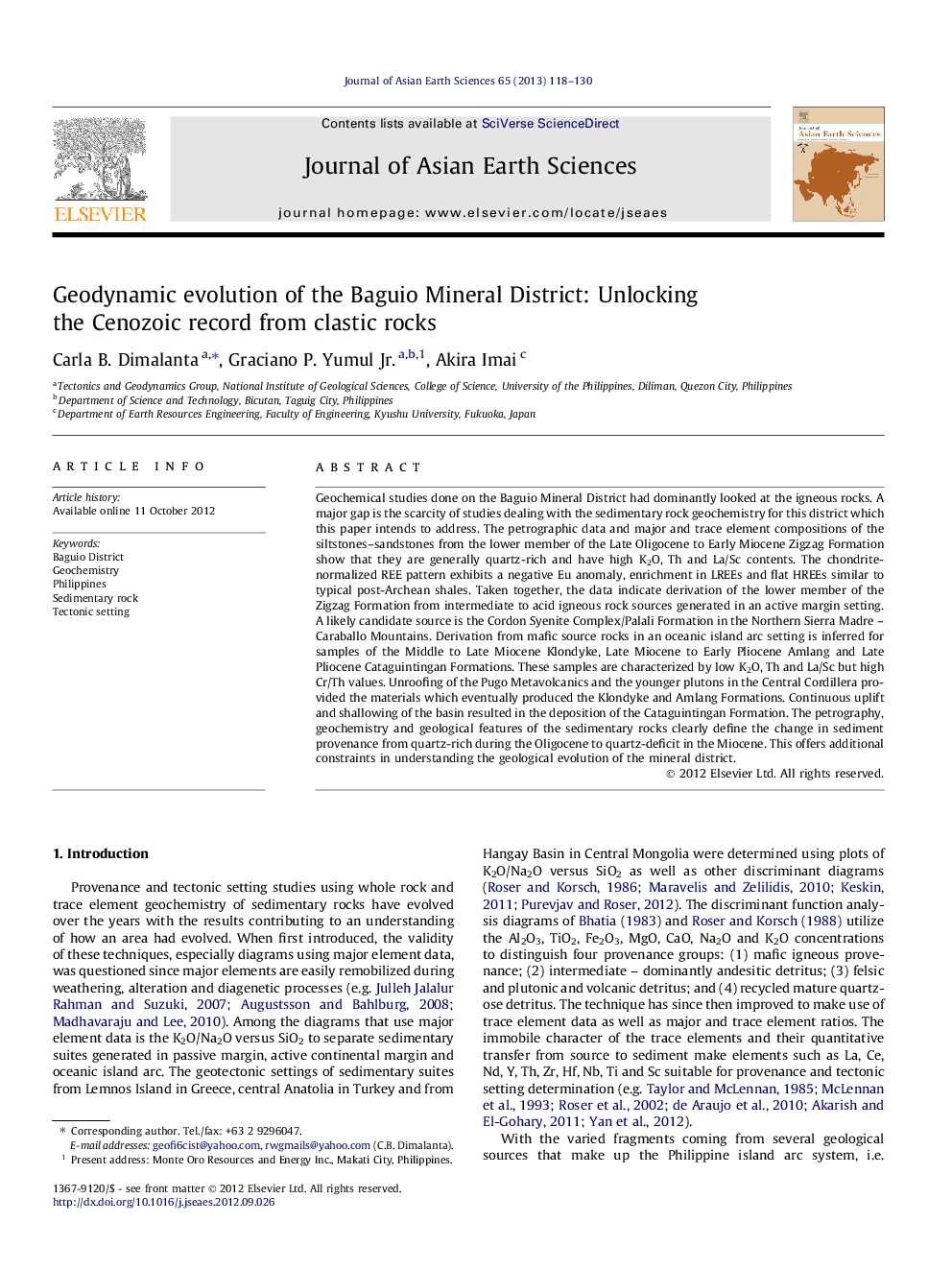| کد مقاله | کد نشریه | سال انتشار | مقاله انگلیسی | نسخه تمام متن |
|---|---|---|---|---|
| 4731203 | 1640400 | 2013 | 13 صفحه PDF | دانلود رایگان |
Geochemical studies done on the Baguio Mineral District had dominantly looked at the igneous rocks. A major gap is the scarcity of studies dealing with the sedimentary rock geochemistry for this district which this paper intends to address. The petrographic data and major and trace element compositions of the siltstones–sandstones from the lower member of the Late Oligocene to Early Miocene Zigzag Formation show that they are generally quartz-rich and have high K2O, Th and La/Sc contents. The chondrite-normalized REE pattern exhibits a negative Eu anomaly, enrichment in LREEs and flat HREEs similar to typical post-Archean shales. Taken together, the data indicate derivation of the lower member of the Zigzag Formation from intermediate to acid igneous rock sources generated in an active margin setting. A likely candidate source is the Cordon Syenite Complex/Palali Formation in the Northern Sierra Madre – Caraballo Mountains. Derivation from mafic source rocks in an oceanic island arc setting is inferred for samples of the Middle to Late Miocene Klondyke, Late Miocene to Early Pliocene Amlang and Late Pliocene Cataguintingan Formations. These samples are characterized by low K2O, Th and La/Sc but high Cr/Th values. Unroofing of the Pugo Metavolcanics and the younger plutons in the Central Cordillera provided the materials which eventually produced the Klondyke and Amlang Formations. Continuous uplift and shallowing of the basin resulted in the deposition of the Cataguintingan Formation. The petrography, geochemistry and geological features of the sedimentary rocks clearly define the change in sediment provenance from quartz-rich during the Oligocene to quartz-deficit in the Miocene. This offers additional constraints in understanding the geological evolution of the mineral district.
Journal: Journal of Asian Earth Sciences - Volume 65, 25 March 2013, Pages 118–130
